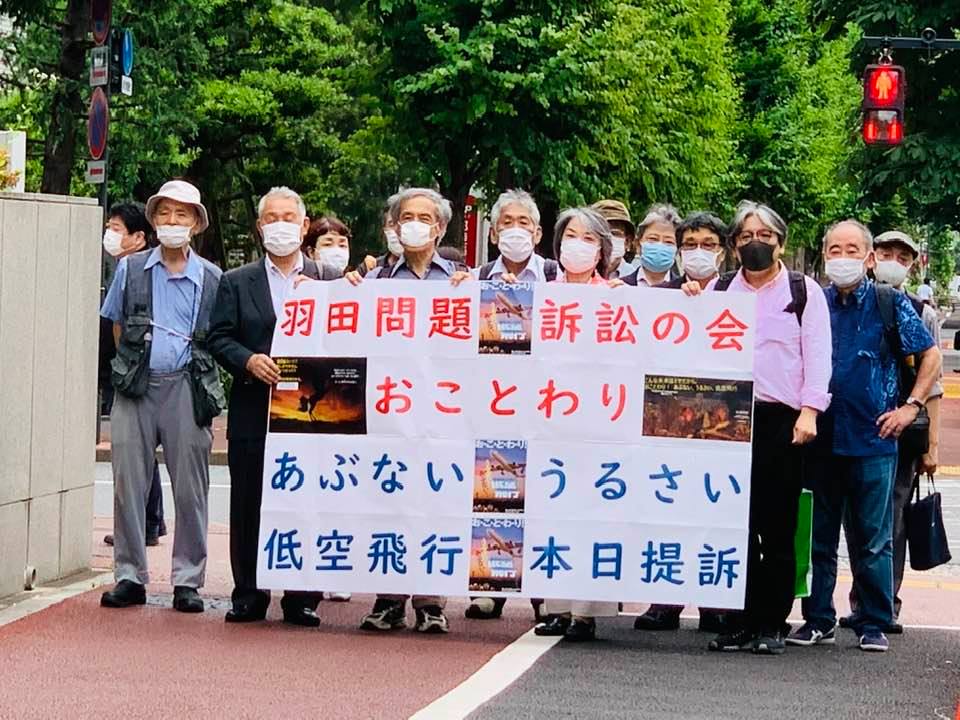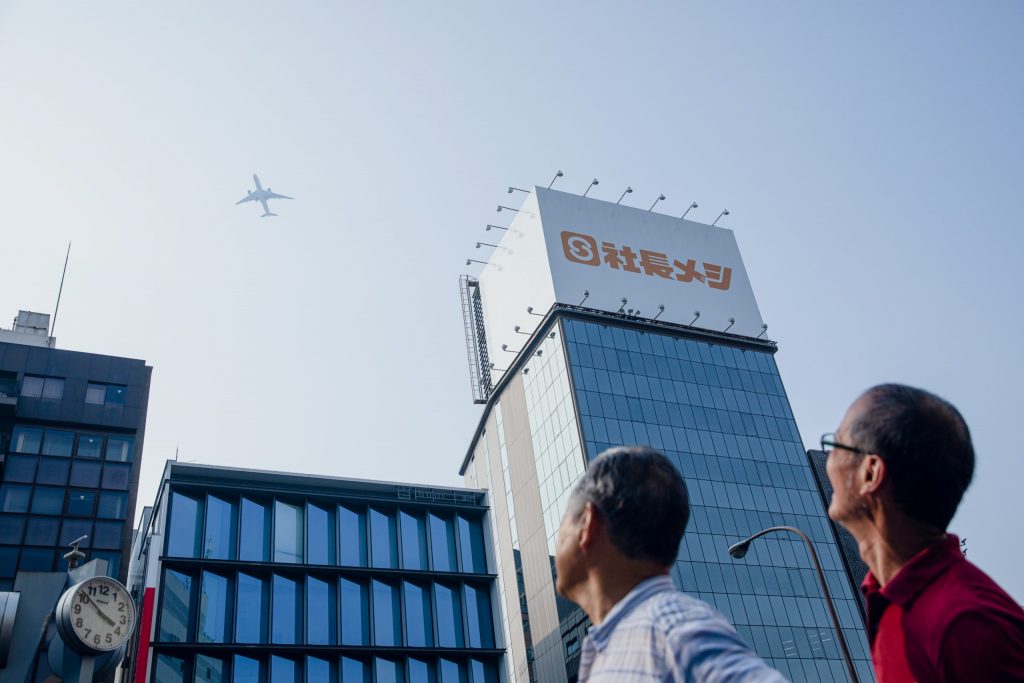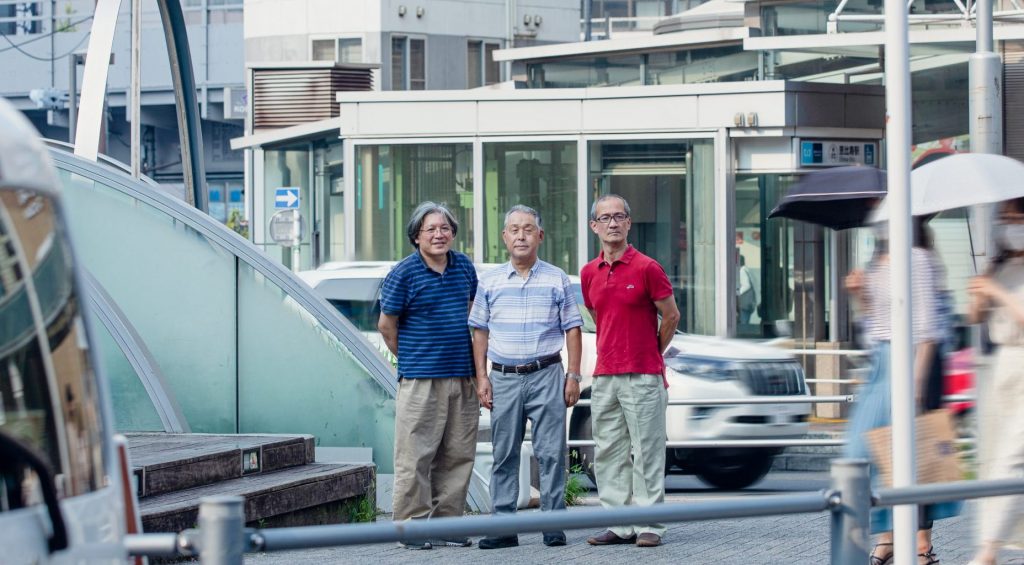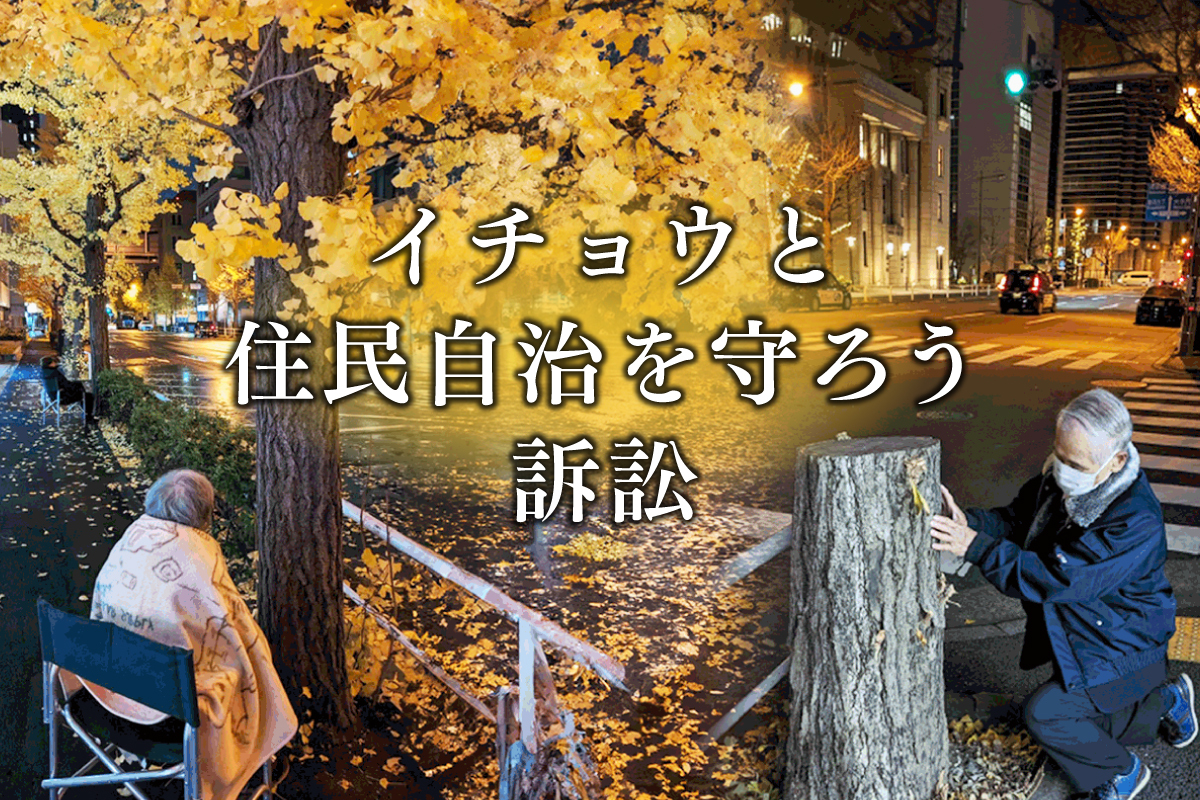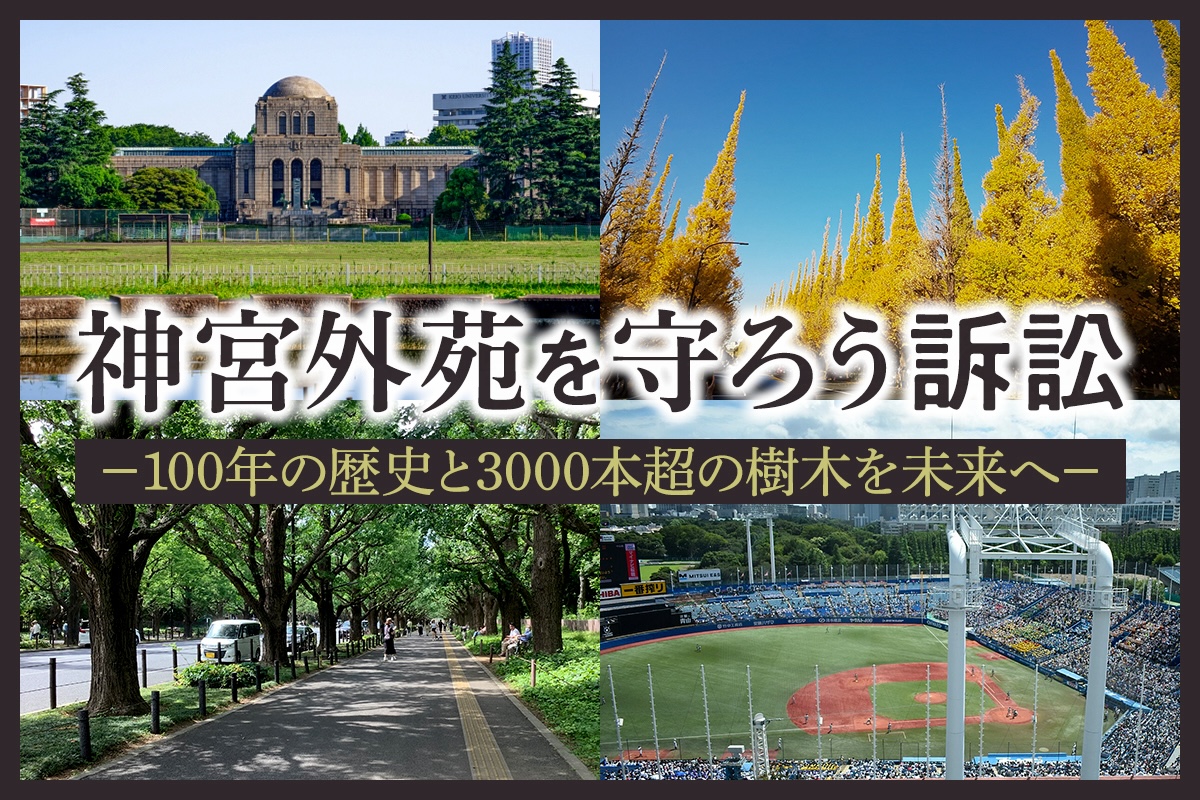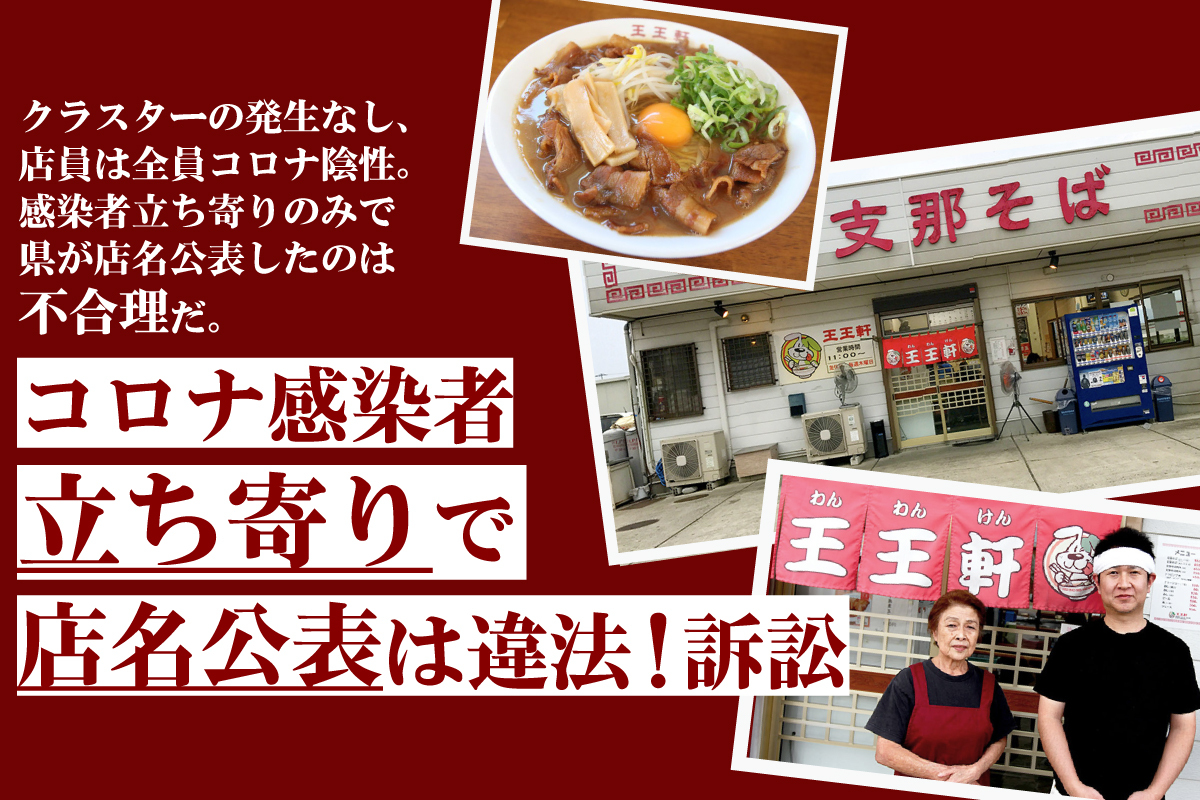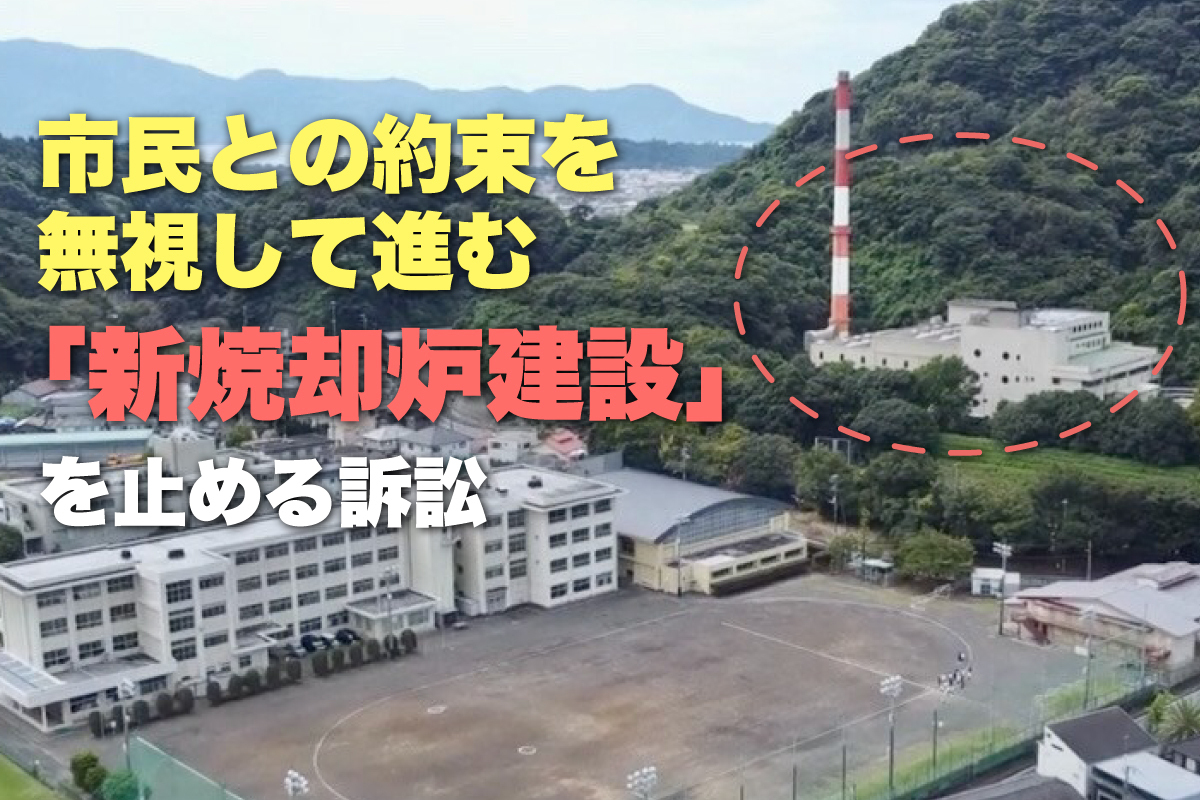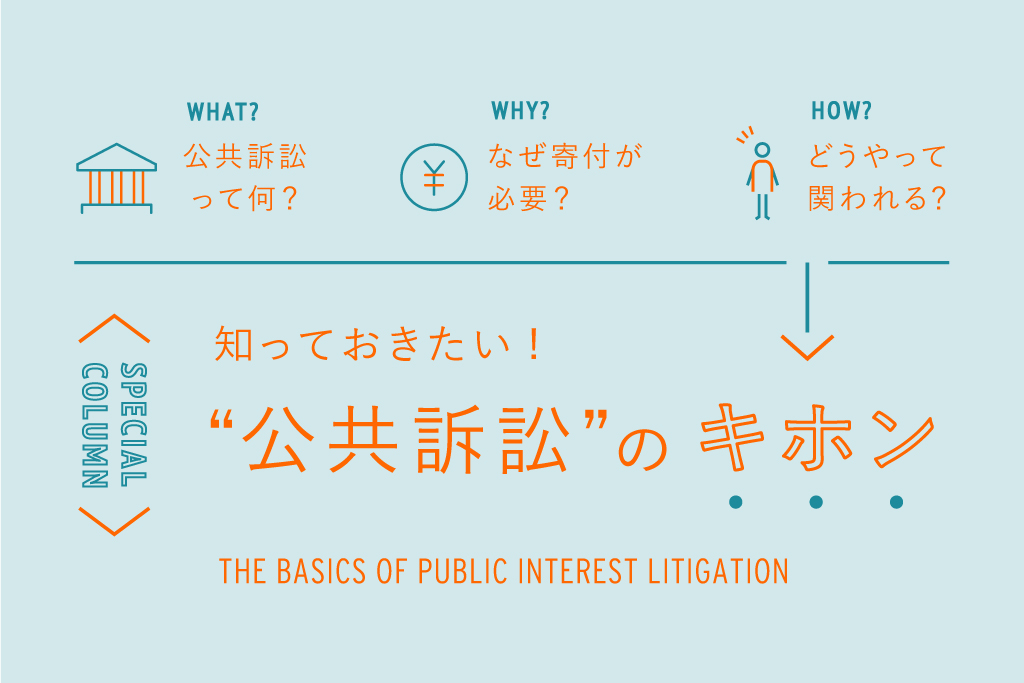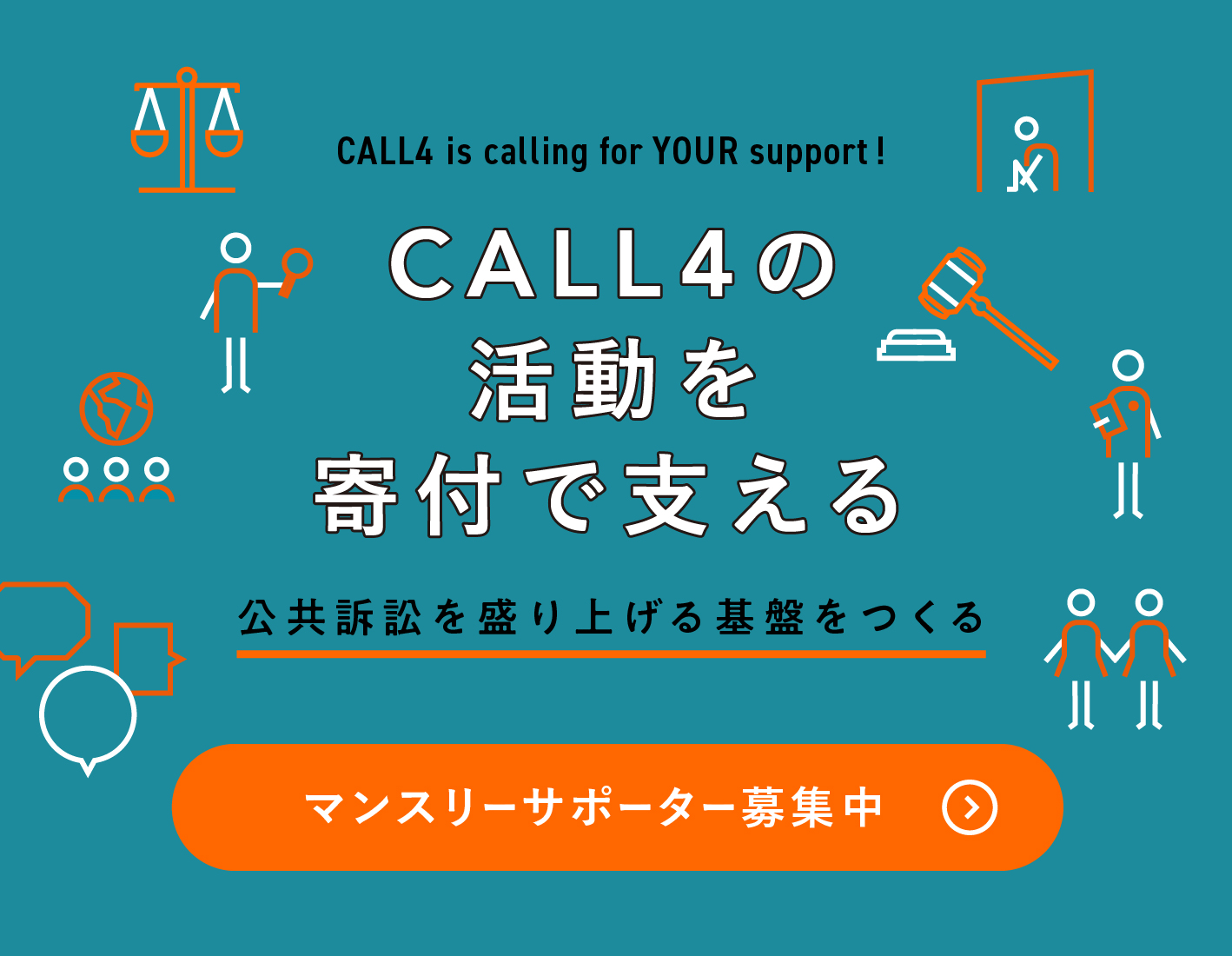「羽田空港新ルート設定の取消訴訟」 Actions for the revocation of administrative dispositions over Haneda Airport’s new flight paths
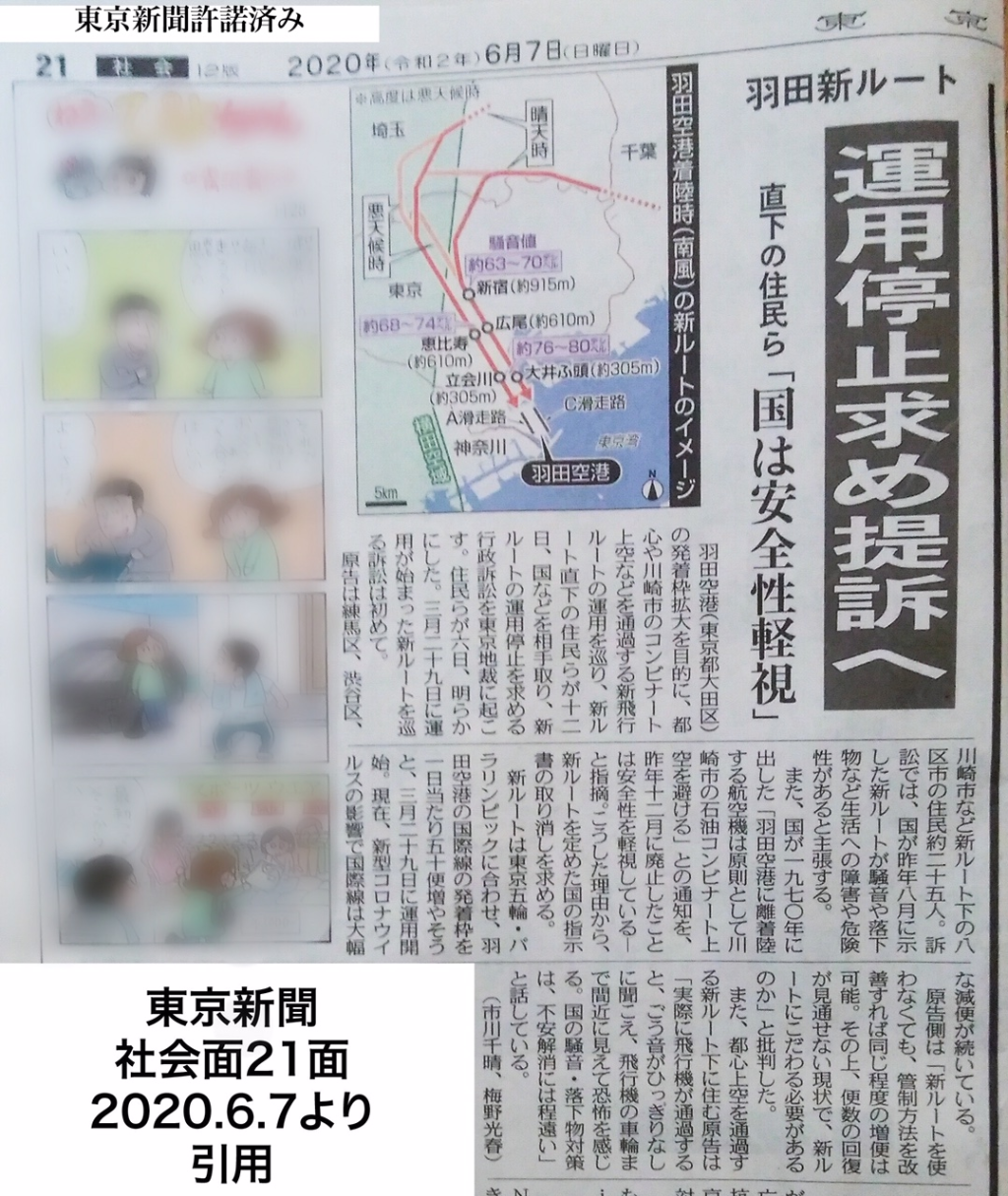
都心住宅密集地や臨海コンビナート周辺の原告ら住民・労働者の生命・環境・安全・健康を守るために 、本件訴訟による行政処分の取消を通じて 、都心・臨海コンビナート上空の低空飛行をやめさせる、羽田空港の離着陸については、これまでの原則通り、海上ルートを守らせる、これが、原告らの願いであり 、本件訴訟の目的でもある 。 To call for revocation of the administrative dispositions that allowed the use of the airspace over the dense residential areas and waterfront complexes as takeoff and landing paths of Haneda Airport.
羽田空港新ルート設定取り消し訴訟
【都心や川崎市の上空が、羽田空港の着陸・離陸ルートに】
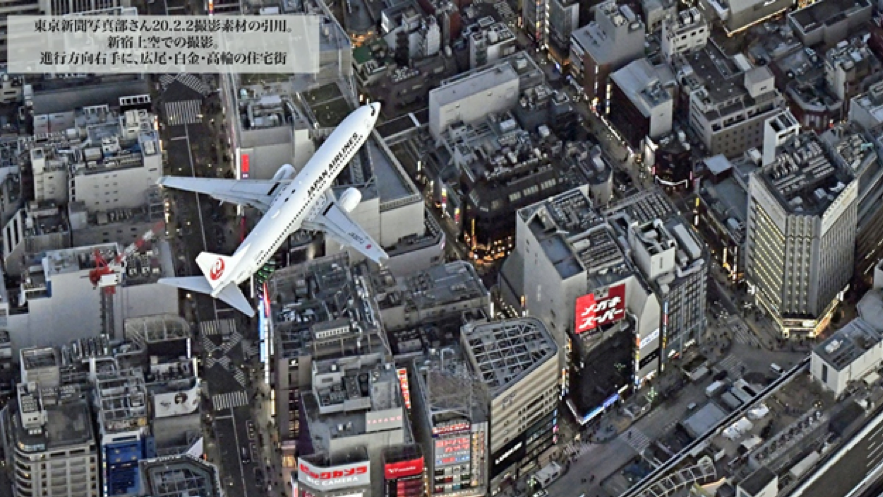
国は、2020年1月30日に都心上空を飛ぶ着陸飛行経路を施行しました。また、2019年12月16日、羽田空港から離陸する航空機が川崎石油コンビナート上空を飛ぶことを認める通知を出しました。
これまで、羽田空港を離発着する飛行機は「海(東京湾)から着陸し、海に離陸」して住民に迷惑をかけないルートで、運用していました。しかし、この通知・施行により、着陸機は都心上空を、離陸機は川崎市上空を飛行出来るようになりました。
私達原告は、これらの措置が東京都や川崎市に住む人、訪れる人の生命・財産・健康に重大な侵害を招くものであると考え、2020年6月12日、東京地方裁判所に対し、被告を国として、裁判を提訴しました。
原告は、飛行ルート至近に住民票を有する29名から構成されています。提訴後には多くの報道機関で取り上げられました。
私達原告が特に問題視しているのは、国が都心や川崎市を飛行ルートにする理由について「航空需要や社会情勢の変化」としか述べておらず、私達の提案する代替方法に耳を貸さず、国民に対して安全性に関する合理的な説明をしていないことです。
国が例を出す都市(例. 伊丹, 福岡)は戦前から航空基地があり、それを承知で住民が居を構えました。一方、東京都心は(幸か不幸か横田空域に関連する飛行制限もあり)飛行経路とは縁もゆかりもないところでした。長く居を構える住宅地に騒音がやってきました。
また、飛行機は車輪を降ろす時に振動から落下物を多く発生させます。その車輪降ろしは、海上など住宅上空を避けたところが大原則です。一方、今回の新ルートで車輪が降ろされる場所は、都会のど真ん中です。
これは一地域の問題でなく、今後他でも起こりうる国民的はテーマを取り扱う裁判と考えています。そのため、CALL4のプラットフォームを通して訴訟における議論の過程を公開するとともに、この問題に関心のある方々からご支援を募ろうと考えました。
【資金の使途について】
今回の裁判は、国の下した判断を争う行政訴訟です。国を相手にした裁判で勝訴することは簡単ではありません。また、こうした訴訟は5年以上に及ぶことも珍しくありません。(提訴2012年7月から、約9年で一審判決[21年3月]の事例)
日本では、長い時間をかけて国に対する行政訴訟に勝ち、裁判所が国の行為が違法であると断じた場合でも、原告は国から賠償金を得ることはできません。
私たちは、これまで個別の支援者の方達からの寄付を元手に当面の裁判費用を捻出してきましたが、長期間の裁判を継続していくための十分な資金を賄うほどに至らない状況です。
今回のクラウドファンディングで集まった寄付金は、長期化するであろう裁判に要する費用、特に弁護士に対する「毎年」「100万円を超える費用」のための財源とさせていただきます。
【今回の裁判の争点について】
私たちは、国の行政処分(2019年12月に出された通知、2020年1月30日に施行した経路の定め)に、次の3点の問題があると考えています。
1)川崎市上空を離陸ルートとすることについて
国は1970年11月6日「川崎石油コンビナート上空の飛行制限について」との通知(以下「旧通知」)を出しました。
この通知は、川崎石油コンビナートの設置される地域上空を航空機が飛行することにより、航空機の墜落や飛行中の航空機からの落下物がコンビナートの諸施設に損傷を与え、大災害が発生し、ひいては川崎市民の生命・財産に重大な侵害が発生する危険性を踏まえ、当時の川崎市民が川崎市長らを通して運輸大臣に宛てた要望書に応え、国が出したものでした。
旧通知がなされてから、50年近くの月日が経ちました。当時と比べて、石油コンビナート地域上空の安全環境に何ら変化はありません。同地帯上空を飛行機が飛行することの危険性は取り除かれていません。昭和41年に3連発、昭和57年に逆噴射墜落、羽田空港至近での離発着失敗事故は、ここ54年で4回を数えます。
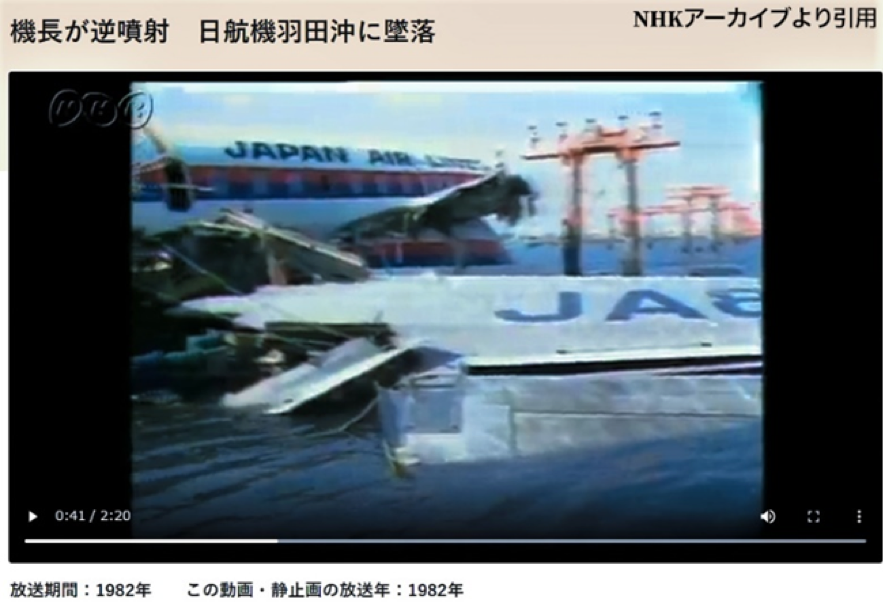
しかし国は、このたび具体的な根拠のないまま新たな通知を出し、旧通知で設定された川崎石油コンビナート上空の飛行制限を一方的に廃止したのです。
このような国の判断は、「航空機の飛行に関し危険を生ずるおそれがある区域の上空を飛行してはならない」と定めた航空法80条違反と原告は主張します。
2)都心上空を着陸ルートとすることの危険性について
国には「航空機の離陸及び着陸の安全を確保」(航空法83条)する義務があります。しかし国は羽田空港新ルートに於いて、何ら義務を守っていないと原告は主張します。
なぜなら、
●飛行機が墜落する危険が、排除されていない。
一般的に、航空機の離発着に接着する11分間(離陸時3分、着陸時8分)は「クリティカル11ミニッツ」と呼ばれています。この時間は、天候の影響やヒューマンエラー等危険な要素が増加し、事故が発生しやすい時間帯です。
2018年4月11日、タイ国際航空機が羽田空港手前8㎞で高度170mまで急降下、墜落寸前の事態が起きました。
2019年には世界中で6機の飛行機が墜落しています。
2020年5月22日にパキスタンの首都カラチ(住宅密集地)で墜落事故がありました。
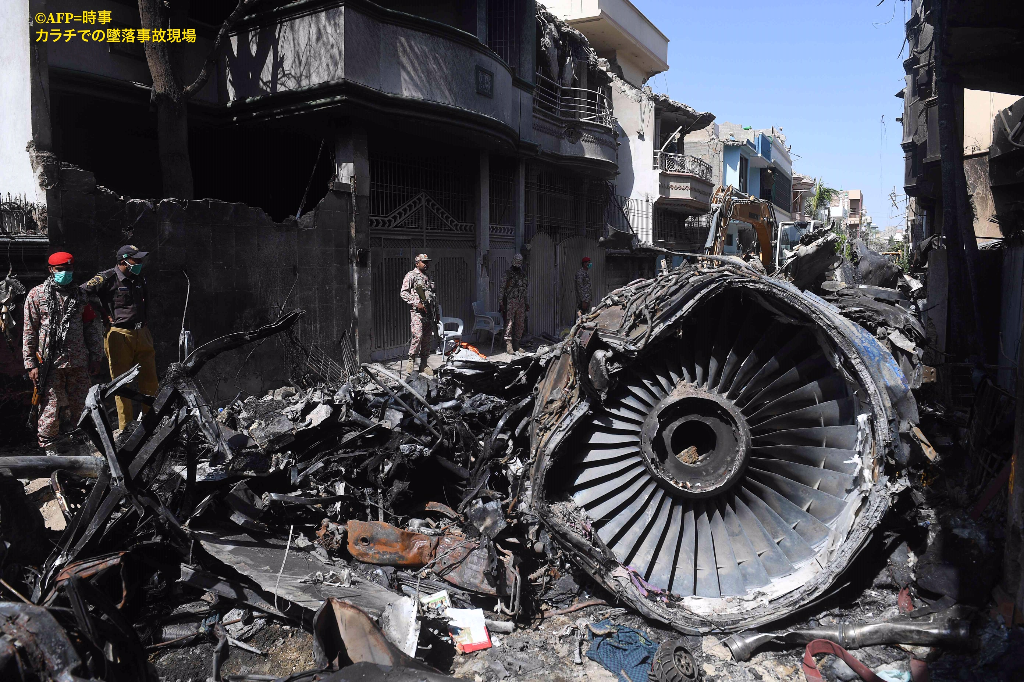
今回の運用は、離陸の3分は川崎の石油コンビナート、着陸の8分は都心を低空飛行するもので、重大事故により計り知れない被害が発生する危険をはらんでいます。
●航空機からの、落下物に関する危険、も依然として存在
成田空港周辺では落下物が多く、対策として約20㎞空港手前の九十九里沖合で車輪降ろしをするよう義務付け、それを監視しています。一方、新ルートでは、その車輪降ろしを都心のど真ん中でやります。
国土交通省によりますと、2017年11月から2019年10月までの2年間で、国内主要7空港から離発着する航空機から1180個の部品が落下しています。
都庁やビル群周辺、繁華街などに、着陸態勢に入った航空機から、部品氷塊が落ちてくる現実がすぐそこに迫っているのです。
●低空飛行で進入してくる航空機から、生じる騒音被害は甚大
低空飛行エリアでは、国土交通省の事前説明を大幅に上回り、最大81~94デシベルの騒音が記録されています。
「ハッシュタグ#羽田新ルートは必要ない」を検索ください。ツイッターでは連日、轟音への悲鳴の書き込みが止まりません。
3)羽田空港新ルート以外の代替選択肢の存在、ほか
国土交通省は住民への説明会で、外国人観光客を増やすため、オリンピックのため、新ルートを飛ばすと説明してきました。しかし、コロナ禍でオリンピックは延期、外国人観光客の入国は目途が立たず、挙句、国内線・国際線双方の欠航ラッシュ。当初予定していた一時間90便の離発着が、回復するメドは立ちません。
そもそも、内閣総理大臣、国土交通大臣は「地元の理解を得てから実施」としていました。一方、品川区、渋谷区、港区は計画の見直しを議会で再三議決し、国へ意見書の送付もありました。欠航ラッシュの20年初夏も、新ルート運用決行の結果、苦情が殺到し開始早々僅か3ヶ月で、有識者を集めた見直し検討委員会を立ち上げる異例の事態となっております。
「成田空港や茨城空港を用いる」「航空管制のやり方を国際基準(特にロンドン)に近づける」などの解決方法がありますが、ここまで国交省航空局は、このような他の手段を用いた政策目標達成の可能性を一切検討していません。都心低空飛行ありきの措置なのです。
われわれ有権者は、日本国政府が、上記航空法上の義務を遵守していると、どうやって納得すれば良いのでしょうか?
【私達原告について】
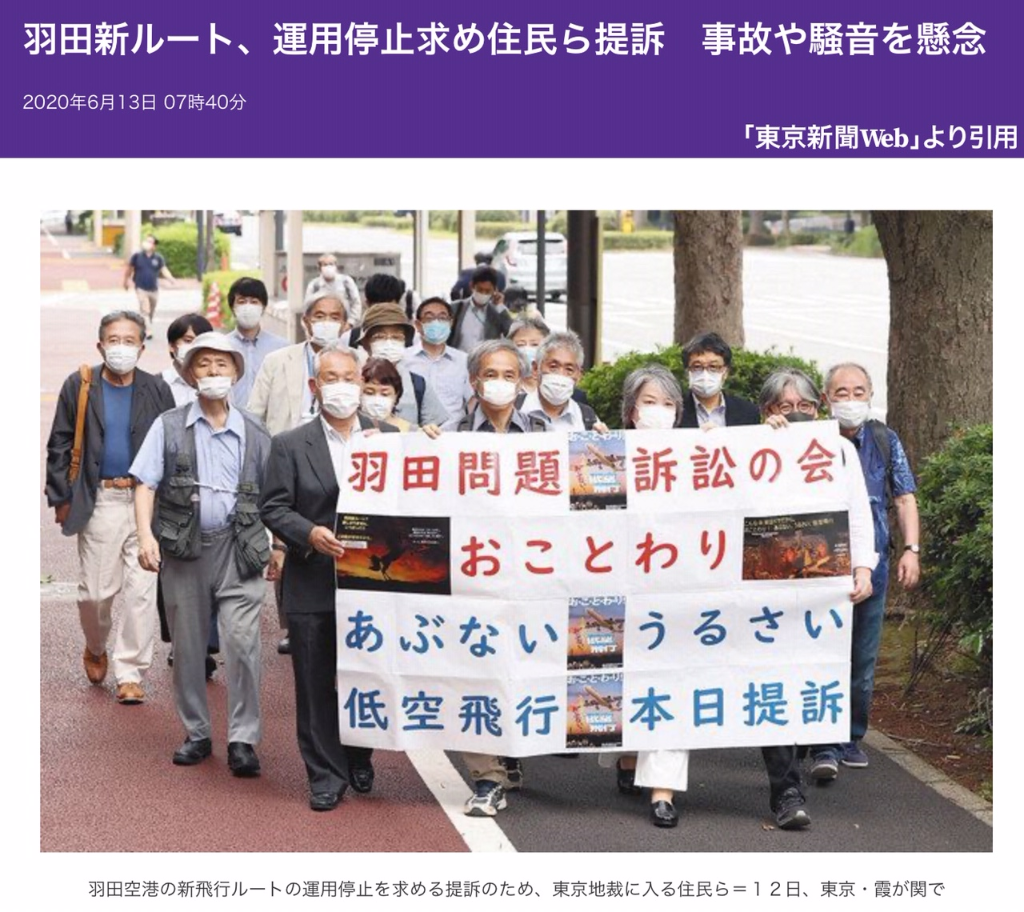
私達原告は、羽田空港離発着ルート下に暮らす住民です。
支援者も含めそのメンバーは多彩です、大学名誉教授や講師、マンション理事長、元CA、元空港管理者、町会長、オーナーパイロット、現職区議、企業経営者、元ジャーナリスト、コンビナートで働く人、と様々なバックグランドの人々が、この問題に立ち向かっています。
この裁判は、恐らく初めて、クリティカル11分との航空機の航行による障害(生命財産への重大な侵害)の防止、を問う、画期的な裁判になるでしょう。
更に国の政策判断の透明性、合理性を求める裁判であるという点において、それはすべての国民に関係してくるものであると考えています。
私たちは、今回の裁判も通し、飛行経路に関する国の判断が空港周辺の人々の暮らしにどれだけ大きな影響を与えるか、また、国の判断が十分に理由のあるものかについて、このページに関心を示して下さった皆様と一緒に考えていきたいと思っています。
ご家庭や仕事の事情、それぞれおありだと思います。無理のない範囲で出来る限りのご協力をいただきたく存じます。
ご一緒に航空行政の稚拙さを法廷の場で明らかにしましょう。
どうかご支援いただけますようお願い致します。
(さらに詳細な私たちの主張等については、訴訟資料のページを随時更新していきますので、ご覧いただけますと幸いです)
Actions for the revocation of administrative dispositions over Haneda Airport’s new flight paths
【The airspace over Tokyo and Kawasaki City became the landing and takeoff paths for Haneda Airport】

On December 16, 2019, the government issued a notice allowing aircraft taking off from Haneda Airport to fly over the Kawasaki Petroleum Complex. On January 30, 2020, the landing flight paths flying over central Tokyo came into effect.
Until this time, planes taking off and landing at Haneda Airport had been using marine take-off and landing paths. However, after this notification, landing crafts are allowed to fly over the center of Tokyo and take-offs crafts are allowed to fly over Kawasaki City.
We, the plaintiffs, believe that these administrative dispositions will cause serious harm to the lives, property, and health of people living and visiting Tokyo and Kawasaki City, and filed a lawsuit against the government in the Tokyo District Court on June 12, 2020.
The plaintiffs are twenty-nine citizens who have a certificate of residence in the area under the flight path. After the lawsuit started, the case was covered in many media outlets.
Tokyo Shimbun1/Tokyo Shimbun2/Tokyo Shimbun3
We plaintiffs think this a problem that the government has explained for the reason of change of flight paths only that “the demand for air travel and social conditions have changed” and has not listened to alternative methods we proposed. The government has not provided a reasonable explanation of safety to the public.
The government explains that low flying over Tokyo and Kawasaki is not a problem, giving the example of Fukuoka and Itami airports, which already have planes flying low over the city.
But unlike Fukuoka and Itami, where residents are aware of the risks and decide to live in, central Tokyo has never been a flight rout due to flight restrictions regarding the Yokota airspace. Therefore, the noise came later to the residential areas where residents have been living for a long time.
In addition, airplanes generate a lot of falling objects from vibrations when the wheels are lowered. As a general rule, wheels are not lowered when airplanes fly over residential areas. On the other hand, airplanes using the new path will lower the wheels in the center of the city.
We think this lawsuit deals with not just a matter of one region, but a national issue that may arise in the other areas in the future. That's why we decided to open the process of discussion in the lawsuit public through the CALL4 platform, and to call for support from those interested in the issue.
【How the funds are used】
This case is an administrative lawsuit against a decision made by the government. It is not easy to win a case against the government, and it is not uncommon for these lawsuits to take five years or more.
In Japan, even if a plaintiff wins this type of administrative lawsuit against the government after a long period of time and a court declares the government's actions to be illegal, the plaintiff is not able to obtain compensation from the government.
We have been using donations from individual supporters to fund our immediate litigation costs. However, it isn’t easy to provide sufficient funds to continue the long-term trial. We will use the donation from this crowdfunding to pay for anticipated prolonged litigation costs, especially legal fees over 1million yen per year.
【The issues in this trial】
We believe there are three issues with the government’s administrative disposition (the notice issued on December 16, 2019, and the flight paths rule that went into effect on January 30, 2020).
1) The risks of using the take-off path over Kawasaki City
On November 6, 1970, the government issued a notice titled “Flight Restrictions over the Kawasaki Petroleum Complex”.
This notice was issued by the government in response to a request from the citizens of Kawasaki City to the Minister of Transportation. It calls for the risk of serious damage to the facilities of the complex if an aircraft crashes or falls from an aircraft flying over the area where the Kawasaki Oil Complex is located. This could result in a major accident and serious damage to the lives and property of Kawasaki citizens.
Fifty-four years have passed since the notification was issued. Compared to that time, the accident risk of airspace over the petroleum complex has not changed. In fifty-four years, there have been four failed takeoff/landing incidents in the vicinity of Haneda Airport.

But this time, the government issued a new notice without any concrete reason and abolished the flight restrictions over the Kawasaki Petroleum Complex.
We plaintiffs argue that this government's decision violates Article 80 of the Civil Aeronautics Act, which provides that, “No aircraft shall be flown over such area as is likely to endanger the safe operation of other aircraft specified by Ordinances of the Ministry of Land, Infrastructure, Transport and Tourism”.
2) The risks of using a landing path over central Tokyo
We plaintiffs also argue that the government has not complied with its obligation to “secure the safety of takeoffs and landings of aircraft at an aerodrome” under Article 83 of the Civil Aeronautics Act on the new landing paths at Haneda Airport for the following reasons.
・The risk of a plane crash
Generally, the three minutes after takeoff and eight minutes before landing are known as the “critical 11 minutes”. This 11-minute period is a time of increased danger and accident susceptibility due to weather conditions such as snow and gusty winds, bird collisions, and human error due to the switch to manual control.
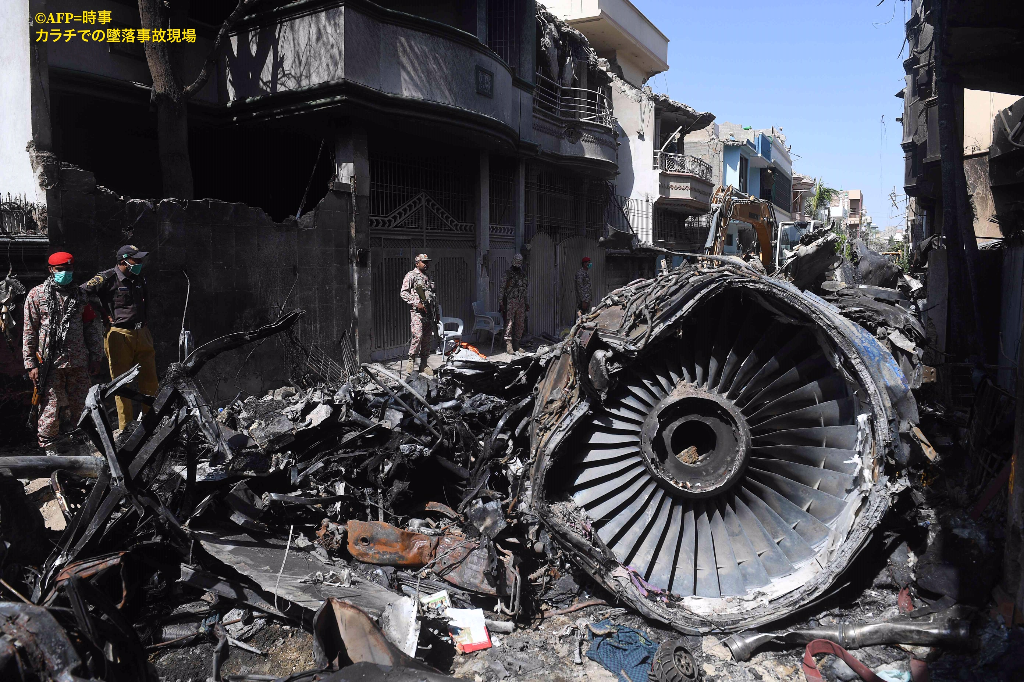
This new landing path, flying low over the city center in the eight minutes before landing, poses a risk of a serious accident and incalculable damage.
・The risk of falling objects from the airplanes
The airplanes generate a lot of falling objects from vibrations when the wheels are lowered. At Narita Airport, landing planes are required to lower their wheels about 20 km before the airport, off the coast of Kujukuri, as a fall prevention measure. On the other hand, airplanes using the new landing path to Haneda Airport will lower the wheels in the central area of the city.
According to the Ministry of Land, Infrastructure, Transport and Tourism, over two years from November 2017 to October 2019, 1,180 parts fell from aircraft taking off and landing from seven major Japanese airports.
There is a possibility that parts and ice cubes could fall from an aircraft landing at Haneda Airport onto the buildings and downtown area of Tokyo.
・The noise issue due to low flying
Noise levels of up to 81 to 94 decibels have been recorded in the low-flying areas, well above the Ministry of Land, Infrastructure and Transport's prior description.
Search “# No new landing path to Haneda Airport” on the internet. You will see thousands tweets to make a complaint about the noise from airplanes.
3) The other options besides the new take-off and landing path
At the residents' briefing, the Ministry of Land, Infrastructure, Transport and Tourism explained that the reason for allowing the new take-off and landing path was the necessity to increase the number of international flights to accept more foreign tourists.
However, due to the covid-19 epidemic, 90 flights per hour originally planned have not been realized. At first, the government explained that the new path would be operated after gaining an understanding of the local community. Shinagawa, Shibuya and Minato wards submitted a written statement to the government requesting a review of the plan. After the new path began to operate, there were a number of noise complaints, and on June 16, 2020, the Ministry of Land, Infrastructure, Transport and Tourism set up a committee to discuss the review of the path.
There are some alternative ways to increasing international flights without using the new pathsuch as using Narita and Ibaraki airports and adopting air traffic control methods based on international standards, as in London. However, the MLIT's Civil Aviation Bureau has not considered these other possibilities.
We the citizens are not convinced that the government is complying with its obligations to" secure the safety of takeoffs and landings of aircraft at an aerodrome" under Article 83 of the Civil Aeronautics Act.
【About plaintiffs】
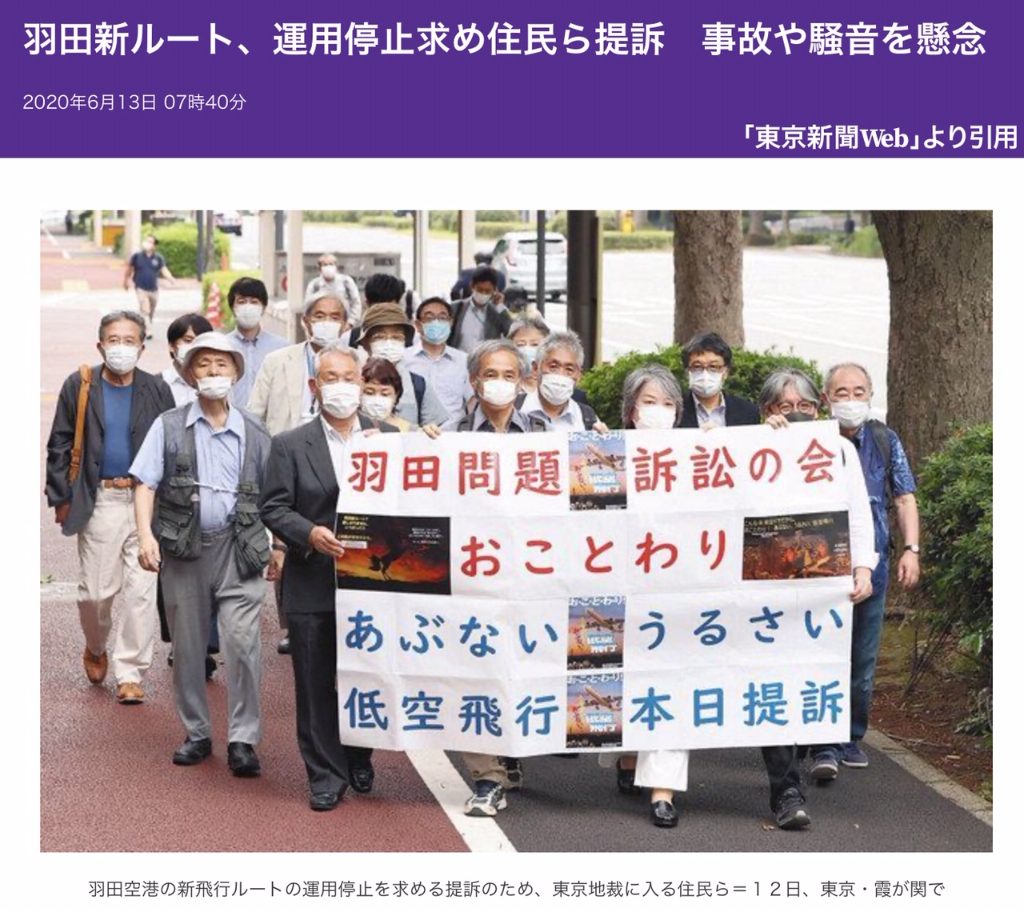
The plaintiffs are citizens who live in area under the new flight path.
The plaintiffs and supporters from diverse backgrounds are taking a stand on this issue, including an emeritus professor and university lecturer, the head of a condominium association, a former CA, a former airport manager, a town council president, an owner-pilot, a current ward councilor, a business owner, a former journalist, and workers at the complex, among many others.
This case is a landmark lawsuit concerning the risk of life and property in the area of flight during “the critical 11-minute” period of aircraft navigation.
Furthermore, we believe that this is a lawsuit that questions the transparency and reasonableness of the government's policy decisions and is relevant to all citizens.
Throughout this lawsuit, we hope to think with you, the people who have taken an interest in this case, about how much the government's decision regarding the flight paths will affect the lives of people near the airport and whether this decision was well-reasoned.
Please help us with your support and donations. Thank you!
あなたにおすすめのケース Recommended case for you
- 外国にルーツを持つ人々 Immigrants/Refugees/Foreign residents in Japan
- ジェンダー・セクシュアリティ Gender/Sexuality
- 医療・福祉・障がい Healthcare/Welfare/Disability
- 働き方 Labor Rights
- 刑事司法 Criminal Justice
- 公正な手続 Procedural Justice
- 情報公開 Information Disclosure
- 政治参加・表現の自由 Democracy/Freedom of Expression
- 環境・災害 Environment/Natural Disasters
- 沖縄 Okinawa
- 個人情報・プライバシー Personal information/Privacy
- アーカイブ Archive
- 全てのケース ALL
